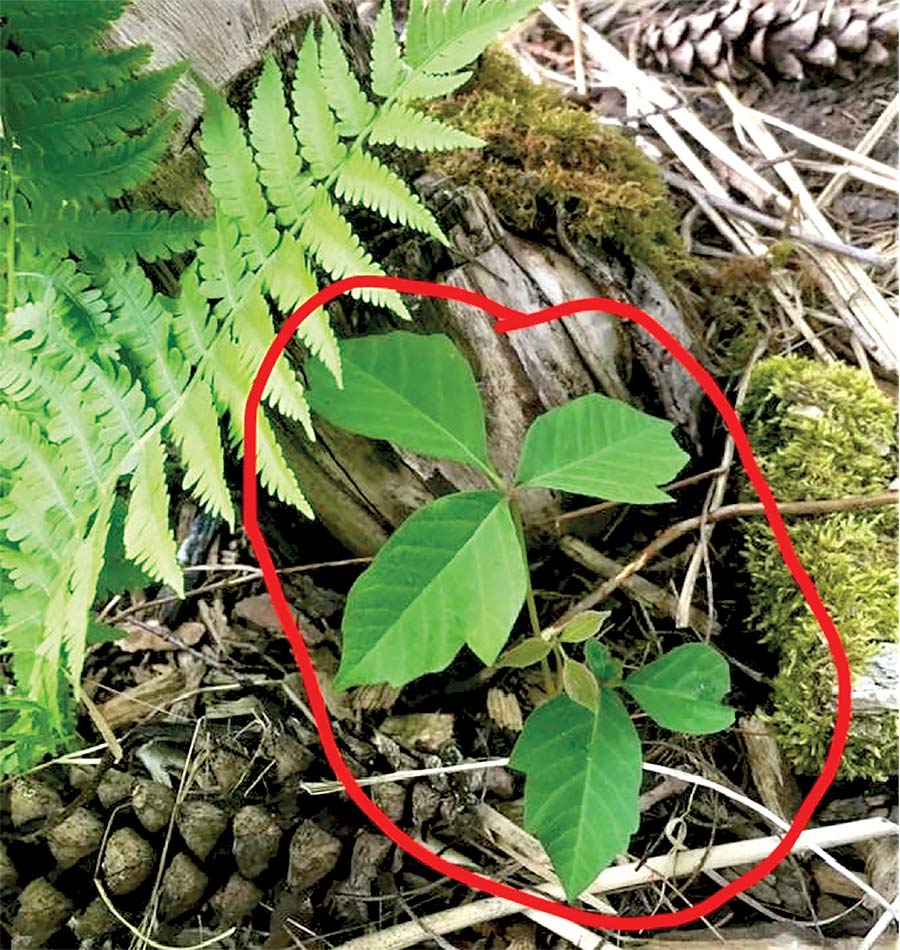WELLINGTON COUNTY – It’s out there lurking –the chameleon of the woodland, blending in with all its other leafy ‘fronds.’
Rhymes are written about this plant to warn us of its siren song: “Leaves of three, leave them be;” “hairy vine, no friend of mine.”
If only it were that easy. As it turns out, there are a lot of harmless plants commonly mistaken for poison ivy. These include Virginia creeper (Parthenocissus quinquefolia), Boxelder (Acer negundo), and blackberry (Rubus).
So why is poison ivy so challenging to identify for the uninitiated nature-lover?
Well, the appearance of this arch-nemesis of the native plant world is variable.
It is a shape-shifter: it can grow as a woody vine or small shrub or a ground cover, trailing along, climbing on plants, trees, and poles.
It is a colour-changer: its leaves can be shiny or matte; reddish in spring, green in summer; yellow, orange, or red in fall.
And it is a master of disguise: the leaves can vary in size and shape, with margins from smooth, toothed, or deeply lobed, to toothless.
An oily resin called urushiol is what causes a skin reaction when people come in contact with it.
Every part of the poison ivy plant contains urushiol: the fruit, leaves, stem, roots, and sap.
What’s more, exposure to urushiol may be through direct contact – by touching the sap or rubbing against the leaves of the toxic plant, and also through indirect contact – by touching something that has urushiol on it, like pet fur or garden tools.
The most common symptoms of poison ivy dermatitis include itchiness, skin swelling, blisters, and redness.
These symptoms usually develop within four hours to four days after exposure to the urushiol.
After the initial symptoms set in, allergic individuals will develop fluid-filled blisters in a line or streak-like pattern.
Typically, the symptoms peak within one to 14 days after touching the plant. They can also develop up to 21 days later in a person who has never been exposed to urushiol before.
So beware! That hike in the woods may be a distant memory when your symptoms crop up.
Thankfully, there are many treatments available for poison ivy. These include ointments, antihistamines, steroids, and antibiotics, depending on the severity of the case.
Like most health concerns, prevention is the key to outsmarting poison ivy.
Remember to wear protective clothing, including long sleeves and pants if/when you are out exploring –yes, even in the heat of summer!
And most importantly, protect your hands. Always wear heavy-duty vinyl gloves when doing yard work or gardening.
If you happen to touch poison ivy, remove any contaminated clothing immediately. Gently wash your skin and under your nails with mild soap and water. Washing within 10 minutes after exposure can reduce the likelihood and severity of symptoms.
Stay safe and don’t be ‘foiled.’
Written by Janine Robertson, Guelph Wellington Master Gardeners




